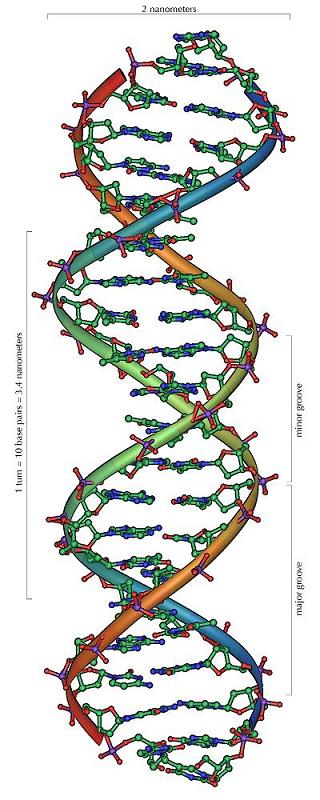Researchers from the University of Wisconsin discovered with the help of computer simulations some of the mechanisms by which DNA coils Individuals, which complement each other, react and join together to form the familiar double helix structure.

DNA, which is found in the cells of all living things, consists of two coils intertwined together and which contain the genetic code by which they develop and function. DNA coils Individuals contain nucleotides, which consist of a base group, a sugar group and a phosphate group. Understanding the mechanism of hybridization, the mechanism by which DNA coils Individuals join together to form a double helix, is the basis of biology and is a key tool for scientific technologies such as DNA microarrays. or DNA-based nanostructures. The research of the group of scientists from the University of Wisconsin began to reveal how DNA coils. get closer to each other and bind together, says professor of biological and chemical engineering Juan J. de Pablo. The team published its findings in the scientific journal Proceedings of the National Academy of Sciences.
The researchers were able to use detailed molecular models to examine the reaction pathways in which DNA double helices. They undergo strand separation (denaturation) - the separation and separation of hyperthermia into single strands, and the hybridization reaction - the joining together, or hybridization, of DNA strands. supplementing In the Watson and Crick pairing mechanism, the nucleotide adenine (A) always binds to thymine (T), while guanine (G) always binds to cytosine (C). The reaction mechanisms are the pathways through which the DNA strands pass. In order to find each other and connect in this complementary way.
The researchers examined both random base sequences and periodic sequences. Random sequences of the four bases contain few or no regular repeats. To the researchers' surprise, in sequences of this type, a pair of bases located precisely near the center of the helix began to join early during hybridization. As soon as they "find" each other, they bind and all the other coil bases connect quickly and in a very orderly manner.
In contrast, in cyclic sequences, the bases appear alternately in cycles, and the group found that these sequences bind through a mechanism known as a spreading process. "Two coils of DNA They find each other, somehow, and then they connect together in a random order during a long transition in front of each other until the complementary bases find each other in the right order, and then they undergo complete hybridization," explains the lead researcher.
The research findings show that DNA hybridization is a very sensitive process to the composition of the bases, or its sequences. "Contrary to what was commonly thought until now, we found that the process in which DNA strands Cross-breeding complements is very sensitive to the sequestration sequence," adds the researcher.
Knowing the full details of the mechanism could allow researchers to develop more strategic and efficient methods in important areas, such as gene chips. For example, the lead researcher points out, if a scientist wants to create sequences that will bind quickly or with high efficiency, he must place certain bases at predetermined points, so that the entire hybridization process will occur faster or with higher efficiency.
Ultimately, the research could help biologists understand why certain hybridization reactions are faster or more successful than others. One of the most fascinating things about this research is that the hybridization reaction between two DNA strands. is really fundamental to life itself," notes the researcher. "This is the basis of most of biology. And it surprises me that until now we knew so little about the exact details of this mechanism."

2 תגובות
1:
Your question is not clear.
Look at the following two numbers:
123123123123123123123123
143241123431422344334121
Can't you tell which one is periodic and which is non-periodic?
In cyclical structures it is more difficult to focus on a specific point because all the areas are similar to each other.
This is not the case with random structures.
This is the reason for some of the phenomena of difficulty in estimating distance when looking at surfaces with a cyclical structure.
Sometimes you can actually get dizzy from such structures when the eyes fail to coordinate between them because each one is looking at a different place but both places look the same.
Randomness is also a form of programming.
What determines whether the arrangement will be random or cyclical.